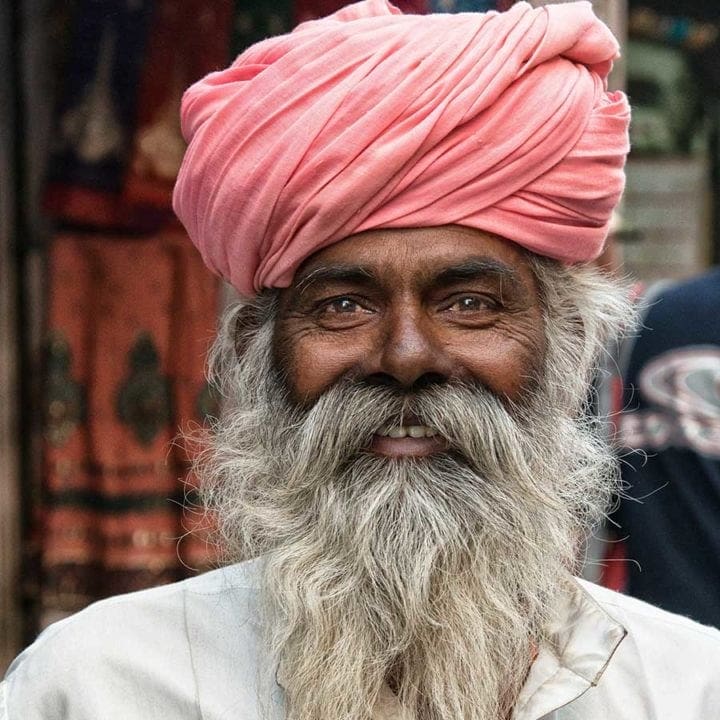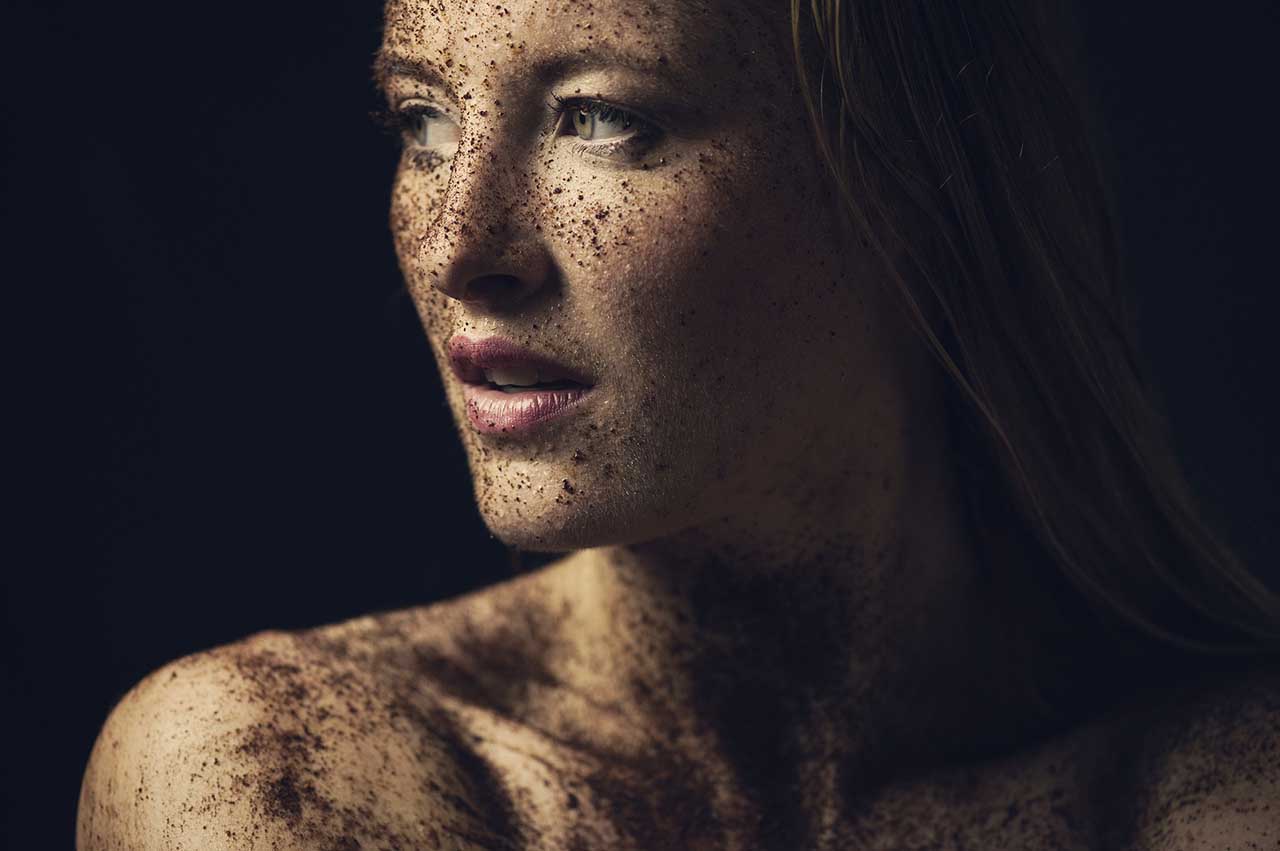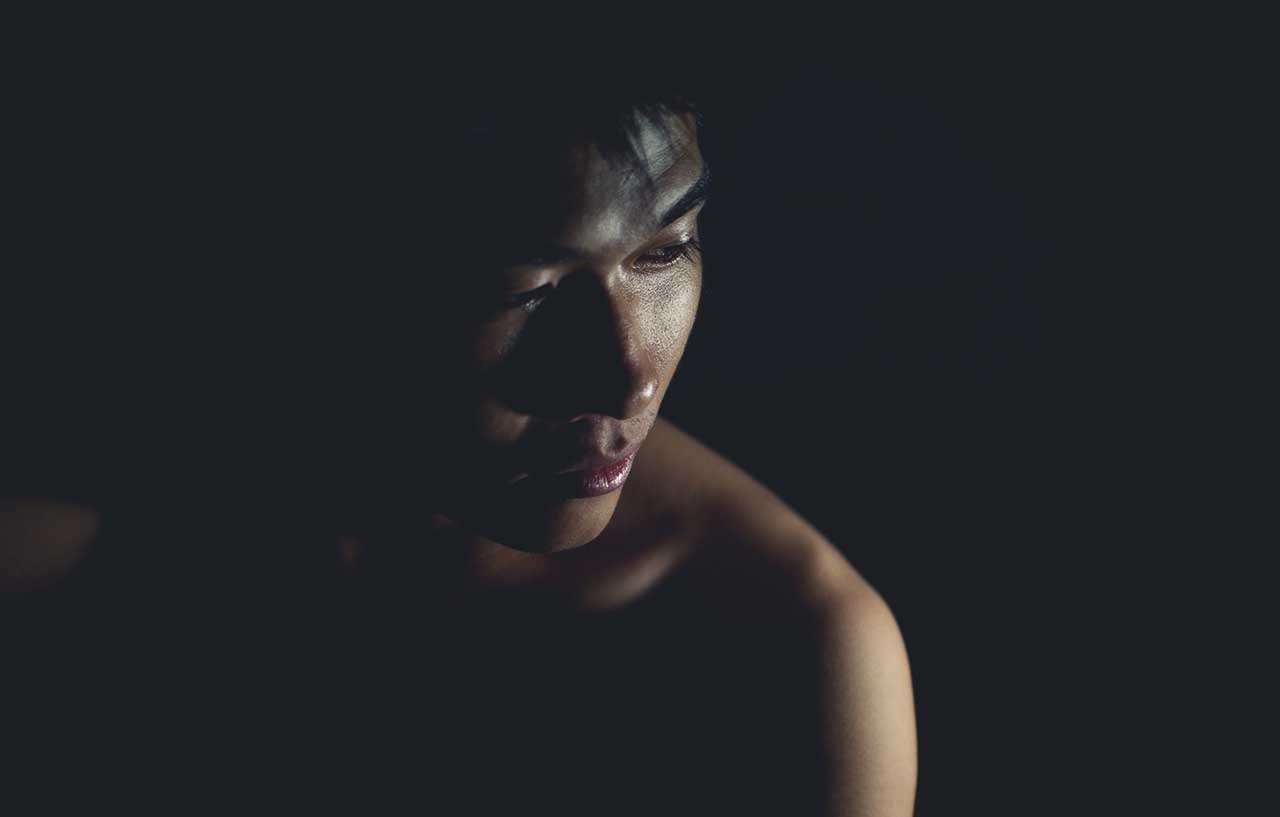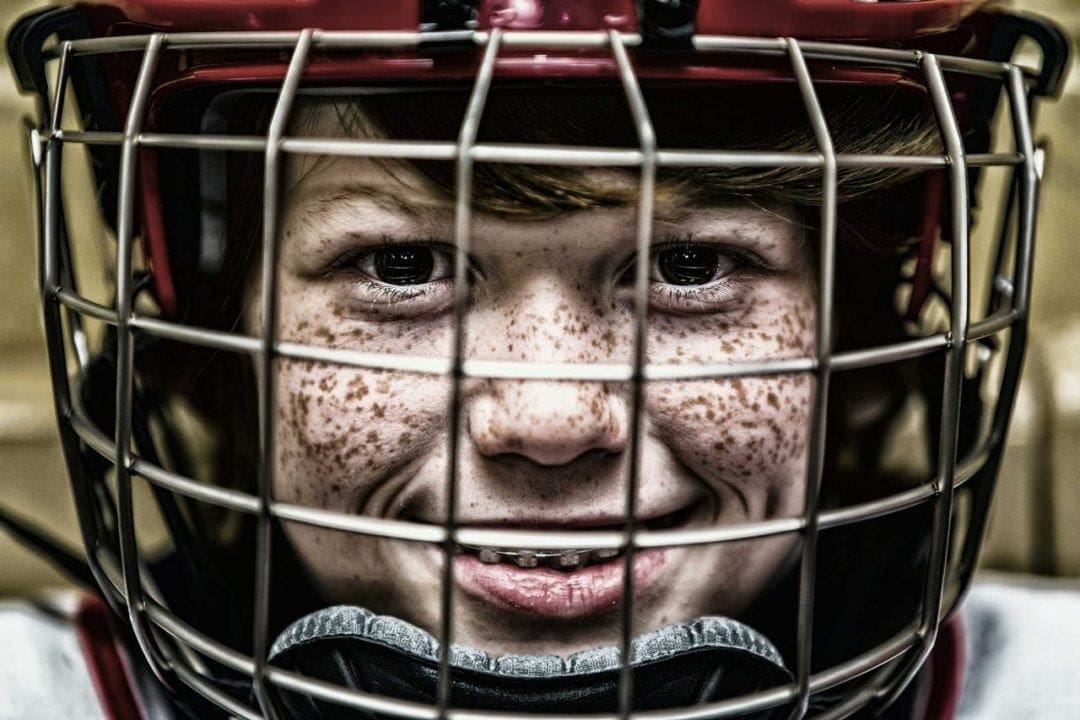Portrait photography is something every photographer does, even if your real passion is landscapes. Ever photographed your children around the Christmas tree? Your family at a relative’s wedding? Guess what: you’re a portrait photographer. We often take our people pictures for granted, but there are several portrait photography tips and tricks that the pros use to take stunning portraits day in, day out, that you can easily adopt and give your own images instant impact. Here are 25 of the best…
Portrait photography tips: 01 Put your subjects at ease
The best way to get a relaxed, natural expression from your subject is to put your sitter at ease. To do this, try to think of ways you can make your shoot fun. If someone hasn’t sat for many portraits, they may feel awkward or uncomfortable, so it’s your job to put them at ease.
You don’t necessarily have to crack jokes, but do try to remember to smile. And be transparent about the process. Make an effort to explain what you’re doing and why as you go along.
You don’t need to explain every little technical detail but you you might find they will become more engaged in the process if you say, for instance, ‘I’m going to photography you from this angle because it accentuates your lovely cheekbones’.
Portrait photography tips: 02 Don’t stop talking
Once you’ve put your subject at ease, the job doesn’t stop there. To ensure you get the best reactions from your subject, don’t stop talking. Keep complimenting them. Make them feel like they are part of the portrait-creating process, rather than a still life.
To be honest, this is one of the hardest aspects of portrait photography and is an area where many portrait photographers let themselves down. Some people naturally have the gift of the gab while others are more introverted.
As hard as it can be to make small talk sometimes, it’s the only way you’l inspire the best reactions from your subjects.

Portrait photography tips: 03 Build a collection of portrait photography props
A good way to break the ice with someone who fees uncomfortable posing is to give them a prop. Having something to interact with often makes a subject feel less unnatural in front of your camera. With kids, for instance, a toy can be very effective, while something as simple as a book or pair of sunglasses can give an adult enough of a distraction to act naturally.
Even asking them to touch a piece of furniture can give them something to do with their hands that takes their mind off the portrait. Hands are often the trickiest part of the body to position correctly, so giving them something to do is a simple, proven way to produce a natural-looking image.
Portrait photography tips: 04 Make sure your subject wears appropriate clothes
We’ve talked about how you want to make your subject feel comfortable, and another way to do this is to let your sitter choose their own clothes. However, it’s best to try and steer them away, if possible, from clothing with brands or logos, even loud patterns. Also, if the colour of their clothing matches your background your subject will start to blend into the surroundings!
Portrait photography tips: 05 Think about eye contact
Direct eye contact with your subject can be very powerful and helps the viewer form a bond with your sitter. Eye contact also conveys emotion and will give you a more powerful image.
That said, not every portrait needs to have the subject staring down the barrel of the lens. For instance, eye contact between two people in an image helps illustrate their connection and indicates a special moment between them.
Portrait photography tips: 06 Give your subject space
When composing your shot, it’s a good idea to give the model some space to look into. For instance, if your subject is stood on one side of the frame, ask him or her to face the other side that’s empty. Even if their eyes are staring at your camera, you’ll want their face angled towards the open space in the frame. Otherwise, your composition risks looking cramped and uncomfortable.
Portrait photography tips: 07 Don’t forget your background
One of the biggest mistakes photographers often make with portraits is forgetting about the background. A cluttered background will distract the viewer from your subject and reduce an image’s impact. Look for a simple, uncluttered background to help your subject stand out.
Sometimes, though, this can prove a real challenge, particularly if you’re shooting an environmental portrait such as a tradesman at work.
In these situations, look around the space you’re working in to find the best angle to cut out some clutter. Shoot with a wide aperture to limit depth of field and give some separation between your subject and their surroundings.
Finally, remember to take a look around the frame before you press the shutter button and make sure there is nothing that’s going to make you frustrated once the shot has been taken. Look for common errors like a lamppost sticking out of your subject’s head.
Portrait photography tips: 08 Don’t make your subject squint
Photography is all about the light, but the great irony is that too much light is bad for photographers! Bright, sunny conditions are often terrible for shooting portraits because the strong overhead light causes harsh highlights and dark shadows that are unflattering for your subject. But worst of all, the strong light will make your subject squint.
That said, photography is also all about working with what you’re given and there are some simple tricks for bagging a great portrait on a bright sunny day.
For instance, simply find yourself a bit of shade and position your subject within it. Dappled light can work very well, but make sure you avoid bright patches on your subject’s face.
Likewise, a burst of flash on a sunny day might seem counter-intuitive but can really add a professional look to your portraits.
When your subject is in shade with the sun behind them it can boost the exposure to match that of any sunlit areas in the background, and if they’re in direct sunlight it will fill out the shadows to produce a more attractive shot. On the other hand…
Portrait photography tips: 09 Don’t use on-camera flash
Like the sun, your camera’s built-in flash is a directional source of light that creates distracting hard shadows and hotspots on your subject’s skin. If your model is close to the background, they’ll also cast a shadow across it.
That’s not to mention red-eye and many other problems that can occur. If using flash for portraiture, you’ll get the best results from an off-camera flashgun.
Using a flashgun remotely allows you to move the light away from the axis of the lens. This gives you more control over where the shadows fall and also eliminates the threat of red-eye. You might also consider holding a reflector on the opposite side of the model to bounce light back and provide more balanced illumination.
If shooting with off-camera flash you’ll need a remote camera cord to maintain its contact with your camera’s hotshoe or, if your camera supports it, you can trigger the flashgun wirelessly.
What’s more, there are various softbox-style attachments you can add to a flashgun to soften its effects, although angling the flash head towards a white ceiling or wall will spread the light over a wider area.
Most flashguns allow you to rotate the flash head upwards in this way so you can bounce the flash when it’s attached to the hotshoe. Most flashguns also typically include a pull-up bounce card too, which can be used to send some light towards the subject to provide catchlights in the eyes. Eyes without catchlights will look lifeless.

Portrait photography tips: 10 Catchlights bring your subject to life
When we speak of catchlights we’re referring to the little sparkles you often see in a subject’s in a portrait. These bright spots are easy to achieve using your camera’s pop-up flash, a flashgun or even a reflector used to bounce light at your subject. If using a reflector, simply move it around until you see the light hit your subject’s face and that sparkle will appear in their eyes. In fact, it’s a good idea to…
Portrait photography tips: 11 Use a reflector even when it’s overcast
Above we talked about the benefits of using a reflector on a sunny day, as you can pose your subject with the sun behind them and bounce light back onto their face to reduce squinting. But a reflector is an essential portrait photography accessory on dull days too. Not only does the extra light enable you to use faster shutter speeds to ensure sharper photos, but it also helps produce a clearer catchlight – particularly if you use a silver reflector.
Portrait photography tips: 12 Try shooting just above your subject’s eye line
Every subject wants to look his or her best, and there are some subtle tweaks to your posing that can help hide unwanted features. A classic technique to tone down a subject’s double chin is to ask your sitter to look slightly up towards your camera.
This stretches the neck, thus flattening it – plus, by drawing the viewer’s eyes away from the body you can also help give people a slimmer appearance. If you’re shooting from above, use a reflector to lighten the shadow areas under your subject’s chin and eyes.
Portrait photography tips: 13 Avoid shooting portraits from a low angle
Shooting a portrait from a low angle will exaggerate the size of your subject’s hips and can give your model the appearance of a double chin if they’re looking down at your camera.
Generally, the only times you’ll want to photograph someone from a low angle is if you’re shooting a child at his or her eye level, or if you want to make a person seem strong and dominant.
Portrait photography tips: 14 Try using a step ladder
Yes, we know. We just told you above that its ideal to shoot from the subject’s eye-level or slightly above, but getting higher up and shooting down can often produce a better image when you’re shooting portraits outdoors.
For starters, this lets you use the ground as a backdrop – portraits look slightly odd when the horizon is slicing the image in half – but it also encourages the model to look through their eyelashes, which can create a more alluring mood.
Portrait photography tips: 15 Use a short telephoto lens
Telephoto lenses generally produce the most flattering results when shooting portraiture. A wide-angle lens, while great for landscapes, makes the subject of a portrait look larger than he or she actually is and it can distort their face. Certainly for head and shoulder portraits you wouldn’t want to use a wide-angle lens – unless, of course, this distortion is what you are trying to achieve.
An effective focal length of around 70-100mm is usually considered ideal for shooting portraiture. On an APS-C-format camera this requires a focal length of around 45-66mm, and 35-50mm on Micro Four Thirds cameras.
This general focal length gives photographers a comfortable shooting distance for a head and shoulders shot and doesn’t leave the subject feeling intimidated by the proximity of your camera. Likewise, you’re also not so far away that someone is likely to walk between you and your subject.

Portrait photography tips: 16 Don’t use a slow shutter speed
As we said earlier, there are lots of easy ways to give yourself more light to work with. But using a slow shutter speed is generally one of the methods you want to avoid when shooting a portrait. In fact, let your camera take control!
When it comes to portraiture, Aperture Priority is typically the shooting mode of choice because it gives the photographer control over the aperture and, as a result, the depth of field.
The danger, however, is that because your camera chooses the shutter speed in Aperture Priority mode it can be easy to forget about it. If you switch to a small aperture, or if light levels drop, make sure you check your shutter speed. If it’s too slow, your portrait won’t be sharp.
Using Shutter Priority is one way to ensure your shutter speed doesn’t drop too low. However, one of the results of this is that you may end up with too much depth of field and a cluttered background that distracts from your subject.
Another option is to use your camera’s Auto ISO option, which will ensure you have a fast enough shutter speed to shoot handheld. As a rule of thumb, when shooting handheld make sure your shutter speed is no slower than the equivalent of your focal length.
For instance, 1/80sec or faster for an 80mm lens. That said, we’d recommend going for a shutter speed that’s twice as fast as a minimum – so at least 1/160sec with an 80mm lens.
Using Auto ISO in conjunction with Manual mode is what we would recommend for ensure the most flexibility. Using this technique you can dial in the aperture and shutter speed combination you want, and your camera will automatically adjust the ISO to ensure a consistent exposure using those settings.
Portrait photography tips: 17 Use an off-centre AF point
When shooting portraits, it’s a good idea to take control of your AF point selection instead of leaving it up to the camera, which may choose the wrong focal point in your composition. Typically with portraits you want to focus on the eyes.
There are then two options photographers choose: use the centre AF point to lock focus on the eyes – or the eye nearest to the camera – then recompose the shot; or choose an AF point that corresponds with the eyes.
Using the centre AF point is often quicker – and the centre AF point is the most sensitive. However, when you’re using a wider lens and photographing in close proximity to a person, as you move the camera the slight shift in the plane of focus may make those all-important eyes look out of focus. This is especially so when using larger apertures, as portrait photographers often do.
In our opinion, using an off-centre AF point is easier in the long run.
Portrait photography tips: 18 Watch the reds
Many cameras offer a portrait Picture Style, Picture Control or Film Simulation mode. These modes work well, but some tend to boost the saturation of red, which is often unflattering for portrait subjects. These reds can bring out pimples or blemishes, so a natural setting, if there is one, is a better option.
Raw files contain the maximum amount of data to give you the best control over colour, but if you need a JPEG image straight out the camera, it’s well worth experimenting with the various colour options to see which works best for your subject. A little overexposure can also work well, but watch out for shiny areas burning out.

Portrait photography tips: 19 Use your continuous shooting drive mode
When we think of continuous shooting we often think of sports or wildlife photography, but this setting also offers portrait photographers a real advantage. If you’re using your camera’s single shot drive mode you’ll have to take your finger off the shutter release if you want to take another photo.
And if you haven’t customised your controls so that autofocus is no longer activated by the shutter release button, then your camera is going to try and focus each time you go to take another shot.
This where continuous shooting becomes a real asset, as you can take a burst of images with the focus locked. Shooting short bursts of three or four images gives you the opportunity to select the peak moment from each sequence when you’re reviewing images on the computer. What’s more, it also increases your odds of getting at least one sharp photo.
That said, while we suggest you use your continuous shooting mode, do try and avoid machine-gunning the shutter release, as you’ll simply end up with a memory card full of identical shots.
Portrait photography tips: 20 Pre-set your white balance
Your camera’s Auto White Balance (AWB) option does a solid job, on the whole in your day-to-day photography. But when you’re shooting a portrait it’s often best to take a bit more control over the colours. A colour cast that’s slightly off isn’t the end of the world. If you’re shooting raw files, then you generally have the flexibility to correct these at the post-processing stage.
The real problem with Auto White Balance when shooting portraiture is its lack of consistency between shots. Your camera may decide to alter the white balance setting from one image to the next, even though your lighting conditions remain the same.
This means more work for you at the editing stage, as you’ll have to tweak each image individually rather than apply a single white balance adjustment to all the portraits from your shoot.
Portrait photography tips: 21 Centre-weighted metering is your friend
Like your Auto White Balance option, pattern metering will serve you well on the whole. If your subject is evenly lit and there are no deep shadows or bright areas, then pattern metering (also known as Evaluative or Matrix metering according to your brand of camera) should deliver a good exposure.
However, if your background is very dark or very light to contrast with your subject and help them stand out, you’ll likely find that with pattern metering you won’t be able to achieve a good exposure of their face.
Exposure compensation is one way to resolve this, but it requires some trial and error and can upset the rhythm of your shoot. We suggest switching to your camera’s centre-weighted or partial/spot metering option.
As the name suggests, centre-weighted metering is a good choice if your subject is positioned in the middle of your frame. Partial or spot metering will let you to take a meter reading from your model’s skin and lock in that setting (by pressing your camera’s AE Lock button).
What’s more, if your lighting isn’t changeable, another option is to set the exposure manually.
Portrait photography tips: 22 Don’t be afraid to edit your photos!
A little editing can take your portraits a long way, but the key is knowing when to stop. Most subjects want to look their best, but they also want to be recognisable. So it’s a good idea to touch-up the odd pimple, soften wrinkles or reduce the visibility of dark circles under the eyes, but don’t go over the top.
Too much editing can make skin look plastic, and your subject appear unnatural. A good rule of thumb is to keep your original shot to hand and take a look at it occasionally as you work so you can see the full impact of your retouching. That said, it’s always a good idea to…
Portrait photography tips: 23 Brighten eyes and teeth
It may seem like a small tweak, but touching up a subject’s eyes and teeth can go a long way to giving your portrait extra impact. Use the Dodge tool, then choose Highlights and set an Exposure of around 6%, then run a soft brush over the whites of your subject’s eyes and teeth. Once you’ve done that, then use the Burn tool with Shadows selected and the same Exposure setting to add depth to their pupil and eyelashes.
Portrait photography tips: 24 Sharpen with care
Unlike landscape photography, where you can generally be quite liberal with sharpening, an over-sharpened portrait can have a devastating effect. Sharpening a portrait simply enhances every wrinkle and blemish and will leave your sitter unhappy with the result.
Portrait photography tips: 25 Be prepared, and have test shots in the bag
We often think of portraits as spur-of-the-moment images – and many are – but most portraits are the result of careful planning and research, and photographers making sure they know the right camera settings to dial in before their subject enters the room.
Remember what we said at the start of this tutorial about putting your subjects at ease? Try to imagine how confident they’ll feel in your skills if you’re spending most of your time fiddling with lights and checking the histogram after each image.
Take plenty of test shots before each portrait session. Work out your technical woes in advance, and not only will you inspire confidence in your subject, but you’ll become more confident yourself.



